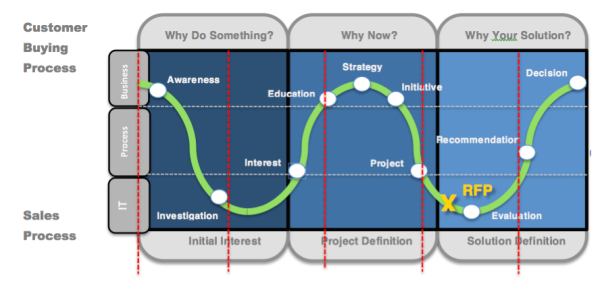Buyers have become more knowledgeable and empowered. Information and experiences among buyers are shared freely through the ever-expanding world of social media. More and more people are becoming reliant on reviews and recommendations made by other buyers who have just completed the buying experience. In an effort to reach new markets and promote their products, comprehensive and detailed information about products and their functions is almost universally available. The new process of buying has put the greatest power into the hands of the buyers, not sellers. This new power is being exercised forcefully and mercilessly.
The one thing that hasn’t changed is the way most salespeople sell. For many salespeople, it’s a one-way conversation driven by a PowerPoint. “Let me tell you about my products and some of their key features………………” Since the customer has already done their Internet research, inquired via social media with their peers, and perused blog posts to understand others’ experiences, we are woefully behind them. Many customers will believe we’re wasting their time.
To accommodate the new world of buying, a new world of selling must emerge. Just as dinosaurs became extinct because of their inability to adapt to the changes in the environment, salespeople who cannot adapt will suffer the same fate.
In today’s world, customers assume that you are knowledgeable about your products. That’s the cost of admission into their office. What they also expect now is that you will learn about their business, how it operates, and what challenges they are facing. They expect you to use your product expertise to tell them how your products will help them lower their costs, increase their productivity, streamline their business processes, increase their revenue, or improve their competitiveness, among other things. They expect you to be more of a business person than a supplier of technical information about your products. If that’s all you provide you can be replaced by a website.
The key to becoming that salesperson lies in becoming skilled in solution selling processes and techniques and adept at using the solution selling tools that are readily available.
The Customer’s Buying Process
“By definition, a process is a systematic series of actions, or a series of defined, repeatable steps intended to achieve a result. When followed, these steps can consistently lead to expected results.
A sale is a series of defined repeatable steps that, if performed well and consistently, will lead to expected results. A sales process defines and documents those end-to-end steps that lead to increased sales productivity”.[1]
The reason to have a sales process is that it provides everyone involved in the sales effort with a roadmap of what to do next. This supports a well-coordinated effort which leads to a higher probability of success.
While salespeople are laser-focused on their sales process, customers are engaged in their own buying process. Many salespeople treat the customer’s buying process as a black box. They put a proposal on one side and hope a purchase order comes out the other side. What happens inside the box is a mystery. Sales competence requires that salespeople understand the process their customers go through in making buying decisions. The selling efforts should contribute to the customer’s efforts in determining why to buy something, why buy it now, and who to buy it from.
Buying processes vary widely. But one thing is certainly true. Most customers’ buying processes are more extensive and complex than salespeople realize. The process also starts long before sales people are brought in to pitch their wares.

